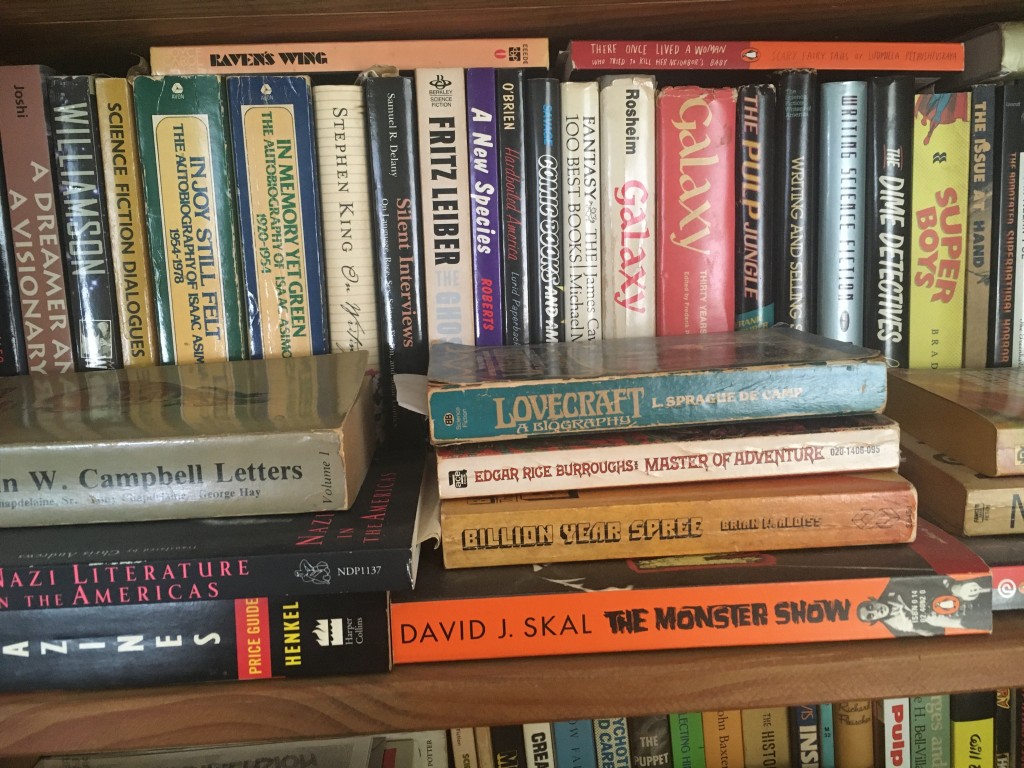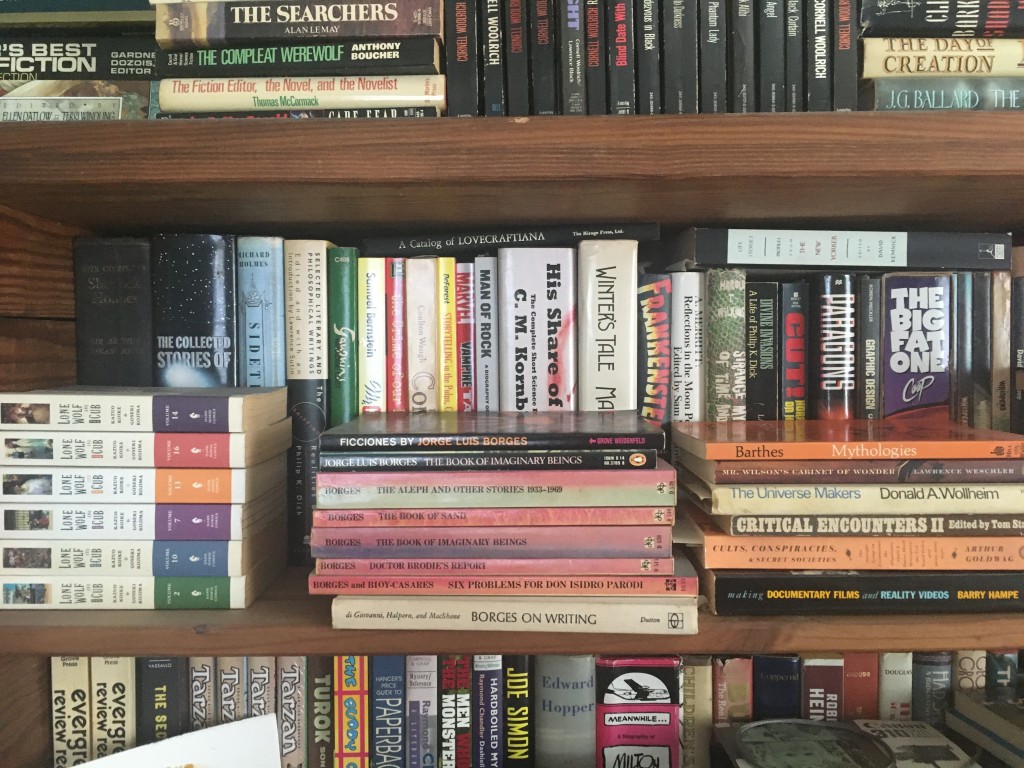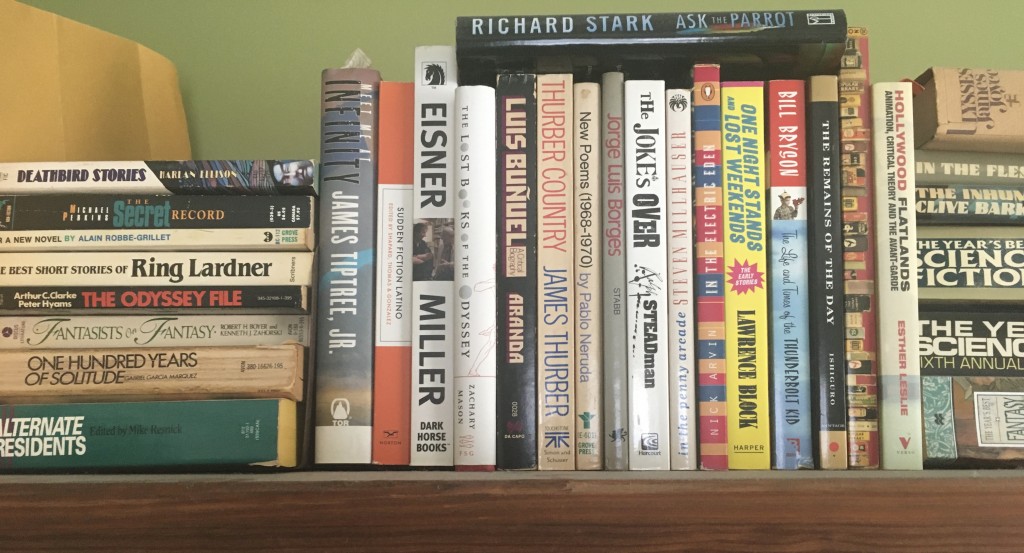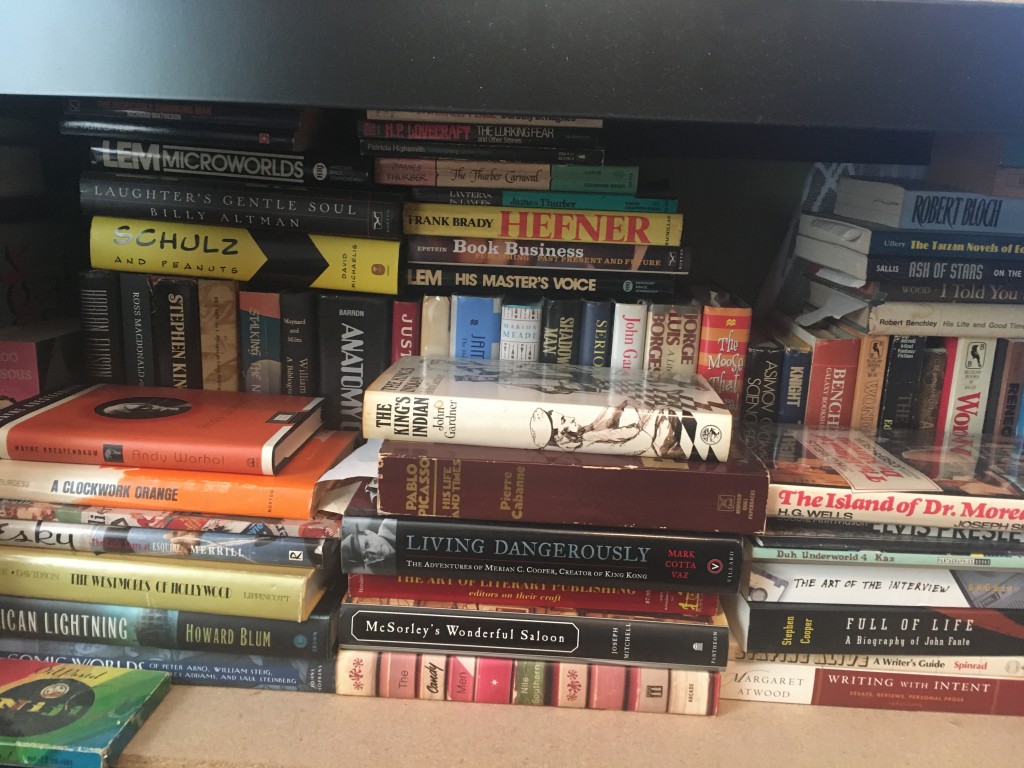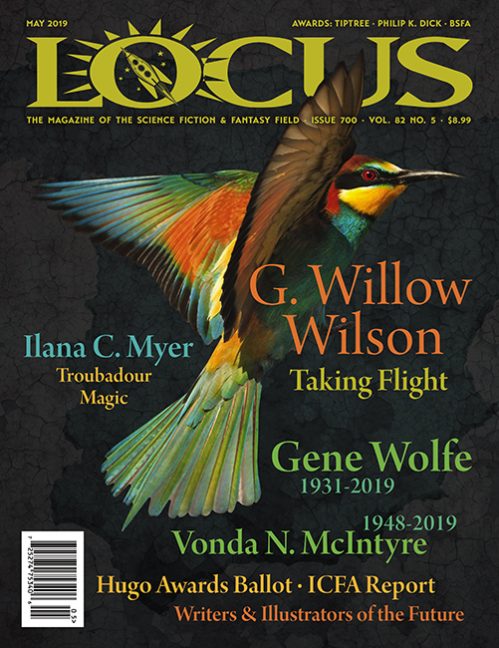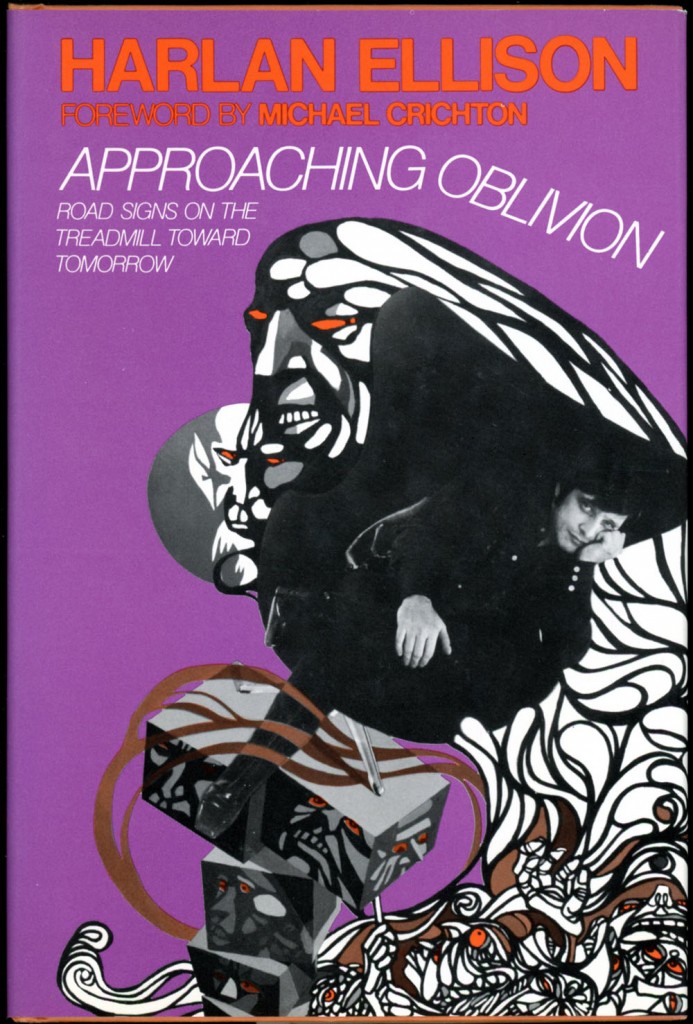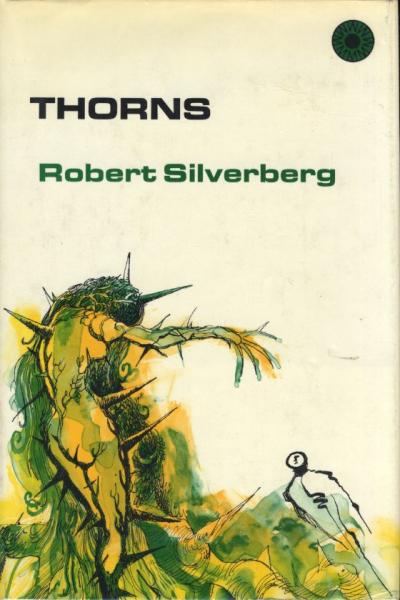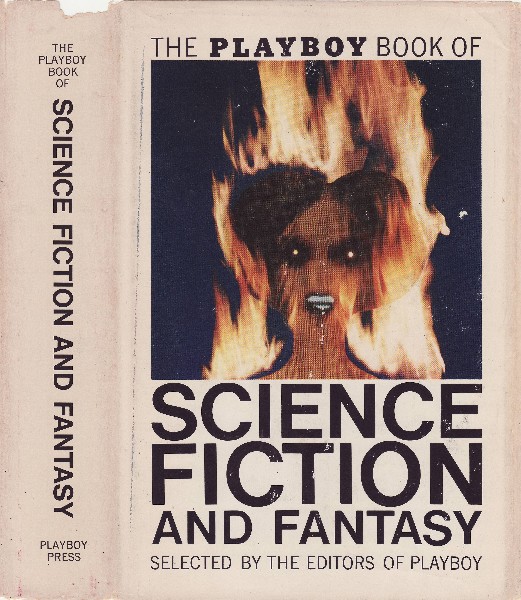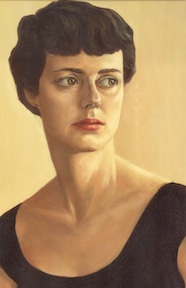
CAROL EMSHWILLER, the author of wonderfully brilliant fantastic stories and novels, died last Saturday morning at the age of 97. She was born Agnes Carolyn Fries on April 12, 1921 in Ann Arbor, Michigan, but from childhood she preferred to be called Carol because at the time it could pass for a boy’s name. It is almost miraculous that she became a writer given that she exhibited signs of dyslexia while growing up and hated anything to do with writing. She once told me that it didn’t help that as a girl living in France she found the combination of hearing English and French spoken together confused her even more. Her father was a linguistic professor but put more emphasis on the education of his sons than his daughter, so it was an easy decision for her to leave college, midterm, to serve in the Red Cross during WWII. She was stationed in Italy where she happily drove a truck delivering supplies.
After the war she met Ed Emshwiller in a life drawing class at the University of Michigan where both were art students. They married soon after they graduated and on their honeymoon toured a post-war Europe on the back of a motorcycle. Returning to America the couple settled in in the newly built community of Levittown, outside New York City, where Ed quickly established himself as a much-in-demand commercial artist specializing in science fiction illustrations. During this time Carol would tag alone with her husband to science fiction gatherings where she met Isaac Asimov, Damon Knight, Harlan Ellison, Theodore Sturgeon, Cyril Kornbluth, Arthur C. Clarke, Judith Merril and other science fiction writers. Listening to their conversations about the mechanics of fiction writing led her to attempt her own stories.
Carol published her first science fiction story in Future Science Fiction (December 1955), and became a semi-regular presence in science fiction magazines over the next decade. Writing was done whenever she found time outside her everyday job as wife and mother. But it was not until one of her stories appeared in Harlan Ellison’s landmark 1967 anthology Dangerous Visions that the science fiction field took notice of her. “Sex and/or Mr. Morrison” was already written when Ellison’s call for “dangerous” cutting edge stories came, but the story, about a woman spying on an alien-like, obese neighbor, with a “moon face”, whose only real peculiarity, to her, is a penis, captured the theme of the book perfectly and was a notable story in a book full of notable stories. In one scene the unnamed protagonist is hiding under a desk in Mr. Morrison room:
Where could he have bought those elephantine undershorts? In what store were they once folded on the shelf? In what factory did women sit at sewing machines and put out one after another after another of those otherworldly items? Mars? Venus? Saturn more likely. Or perhaps, instead, a tiny place, some moon of Jupiter with less air per square inch upon the skin and less gravity, where Mr. Morrison can take the stairs three at a time and jump the fences (for surely he’s not particularly old) and dance all night with girls his own size.
At the time “Sex and/or Mr. Morrison” was published she was already moving away from science fiction, and her writing took a deliberate literary turn after she met Kenneth Koch and became a student in his poetry classes. Her first book, a collection of stories, titled Joy In Our Cause came out in 1972 and eschewed much of her science fiction (it did include the hard to classify “Sex and/or Mr. Morrison”).
By the early 1980s she had lost patience with the slow response times of literary magazines and went back to writing fantasy and science fiction. She now embraced genre fiction whole-heartily and began turning out some of her best writing. Stories began to appear in Omni, Twilight Zone Magazine, The Village Voice Literary Supplement, and The Magazine of Fantasy & Science Fiction. This was a period when she was writing confidently and most of her stories found a home.
Her first published novel Carmen Dog (a previous attempt was stopped midstream when her agent Virginia Kidd give the manuscript a negative evaluation), a picaresque tale about a world where all the women turn into beasts and beasts become human came out in 1990 and was seen by many as a feminist tract. She wrote a western novels, Ledoyt and its sequel Leaping Man Hill, because she wanted to write about the west after having live there.
Carol became a full-time writer after Ed died in 1990. In 2002 she won the Nebula Award for her story “Creature”, and Philip K. Dick Award for her novel The Mount. A World Fantasy Lifetime Achievement Award followed in 2005, after which she said, “This should be typical of a mother of three’s career”.
Emshwiller was a meticulous writer, constantly tinkering with her prose. Before she brought her first computer she would cut pages into pieces (like William Burroughs, a writer she disliked) and work on rewrites by rearranging pieces of her typescript on the floor.
In the introduction to The Collected Stories of Carol Emshwiller, Vol. 1 (Nonstop Press) she wrote, “I’ve never known quite what to call my writing. When I’m boasting I call it Magic Realism…and some of it is…. It’s often fantasy though lots of it is actually science fiction.” It didn’t matter if she was writing fantasy, magic realism, westerns, mysteries, slipstream, or science fiction, all of Carol’s stories fell within a uniquely inventive, human-centric fantastika all her own. Carol continued to write until 2011 when failing eyesight due to macular degeneration made it impossible for her to see or read words on her Mac laptop.
I always looked forward to seeing Carol every time I visited her in that cramped one bedroom apartment on East 15th Street, in Manhatten. Over Starbucks coffees in paper cups we would gossip about authors and people in publishing before talking about family and what projects we were working on. I remember my first visit years ago; I mentioned that I was having trouble finding a copy of her first book Joy In Our Cause. She stepped behind the futon that served as the living room sofa and pulled out a box-full of books that likely weighed half as much as she did and handed me a copy. She told me she had to dump boxes of the book when she made the move from the Levittown house to the smaller apartment. “I still have lots of them. I don’t think Harper & Row sold many copies.”
Over the past few years her health had been a concern to friends and family. She suffered a heart attack in 2012 and her children took turns coming to New York to take care of her. In 2018 as her health declined, and she needed a walker to get around, Carol finally moved in with her daughter Susan, also a writer.
I once asked her about the feminist tag that some people attached to her and she told me that she always made it clear to anyone who would listen that she wasn’t one of those feminist that disliked men. Many of her stories dealt with the frustrations of motherhood, and being a woman living in the same world with men. In her work, if one read closely, there was always love and a lot of empathy directed toward men. At the end of my visits Carol would always kiss me goodbye on both cheeks in the French manner. I will miss her very much.
(Art — painting by Ed Emshwiller of Carol, c. 1957.)
